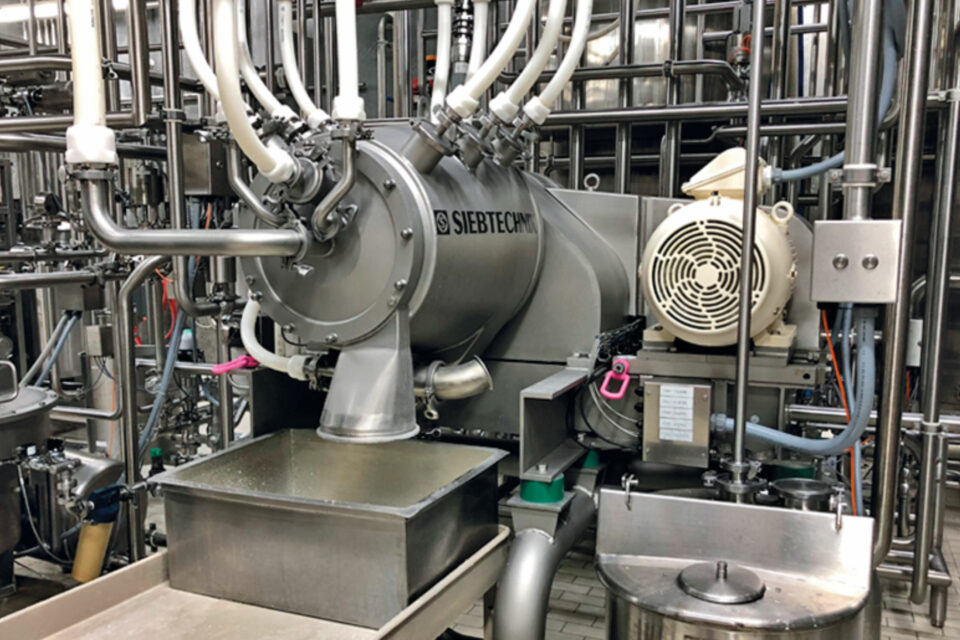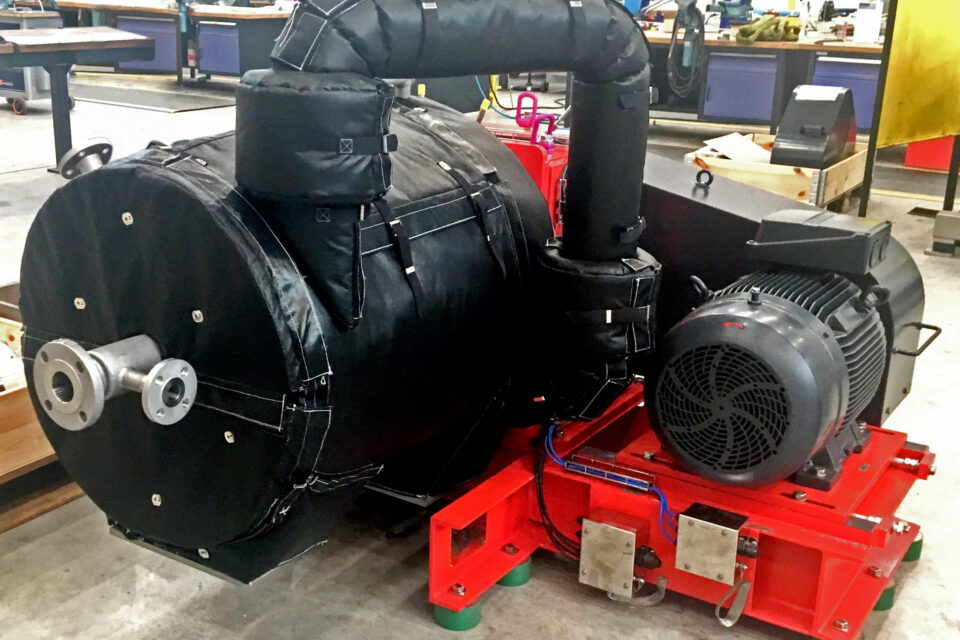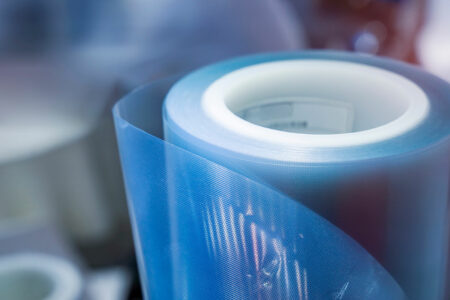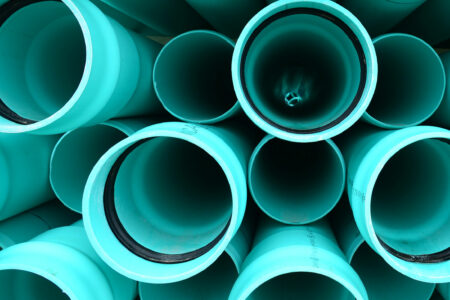STReAM Centrifuges
SIEBTECHNIK TEMA Remote Advanced Monitoring
Your digital module for preventive centrifuge maintenance - with optional cloud connection
The design principle with strict separation of the process and drive units makes this decanter ideal for use in pharmaceutical or food processing plants (CIP cleaning). Use in high-temperature areas or pressure-tight processes can also be realized with this machine concept.
The SBD decanter is ideally suited for everything from laboratory scale to harsh applications in the raw materials industry. Designs in special materials, explosion protection and inert gas blanketing or hot gas coating have been part of the range for over 50 years. In addition, we increase operational reliability with recirculating oil lubrication for all bearings, including gearboxes and screw bearings. We also offer this design with USDA approval.
Compared to normal decanters, product washing is much easier to realize.
In this solid bowl centrifuge, the rotating parts are mounted on one side (overhung), which is particularly advantageous.
The centrifuge rotor ends behind the partition wall of the solids discharge chamber and thus guarantees free and unhindered ejection of the solids from the product housing.
The SHORTBOWL is designed for solids with good sedimentation behavior, i.e. for fine solid particles with a high specific density difference to the liquid or for solids with sufficient particle size and sedimentation tendency in the available retention time. The short design has also proven to be an advantage in the classification of solid particles. Despite the relatively short solid bowl, the SHORTBOWL is a continuous high-performance centrifuge with optimum separation results in the right field of application.
To separate solids from the liquid, the suspension is fed into the feed chamber of the screw body via an inlet pipe. From there, the product passes through openings into the centrifuge bowl and is accelerated to peripheral speed. Under a multiple of the acceleration due to gravity, the solids sediment towards the inner surface of the bowl and are transported by the screw conveyor to the discharge edge of the conical part of the bowl.
The filling volume in the cylindrical part of the solid-wall drum and thus the length of the drying strand in the conical part is determined by adjustable weir disks.
The correct ratio of clarifying and dry parts must be determined on a product-specific basis by means of preliminary tests or during operation.


The solution to a separation problem depends on the drive of the centrifuge. The centrifugal force required for solid-liquid separation is determined by the speed of the bowl or screen. To achieve the right speed for optimum separation results, it is often necessary to keep the speeds variable. Our specialists will customize the required drive control for your application.
In screen scroll centrifuges and decanters, the differential speed of the solids conveying screw to the bowl is also critical. It determines the residence time of the solids in the centrifuge and therefore the separation efficiency.
The correct differential speed for your separation task is determined by selecting the right gear. The differential speed can be constant or variable. In the latter case, the backdrive is used, where the otherwise fixed input shaft of the gear is also driven. If you want to keep the screw speed completely independent of the bowl speed, hydraulic drives (Viscotherm) or two-stage gearboxes with an upstream differential planetary stage are used.
The drive system is continuously monitored to ensure the operational safety of your centrifuge. Overspeed, overcurrent and slippage are detected and reported to the machine control system for action.
Inerting our machines and systems can be necessary for a variety of reasons. In many industrial processes, it is necessary for safety reasons to reliably prevent the formation of an explosive atmosphere caused by dust or gases (ATEX).
In addition, it may be necessary to seal and blanket product spaces with inert gas, such as nitrogen (N₂) or carbon dioxide (CO₂), to prevent oxidation and maintain product quality.
Take advantage of the decades of cross-industry experience of SIEBTECHNIK specialists in sealing and inerting the process chambers of your centrifuges.
We are happy to work with our customers to develop an inerting concept for the integration of our machines into existing or planned systems.
The name SIEBTECHNIK TEMA is inseparably connected with dewatering tasks under the highest hygienic requirements. The separation of breadcrumbs from frying oil at temperatures of approx. 200°C with the SHORTBOWL decanter centrifuge, the centrifugation of lactose crystals for the production of baby food with the SHORTBOWL decanter centrifuge and the CONTURBEX screen scroll centrifuge or the production of high-purity inorganic salts with our CONTURBEX and pusher centrifuges are just a few examples. Design features include technical separation of the drive and process areas of the centrifuge, advanced sealing systems that are easy to clean by CIP.
To optimize centrifuges for hygienic applications or in areas where CIP must prevent cross-contamination, we use riboflavin tests to verify and optimize cleaning results.
In-house developed and USDA-certified CIP nozzles, in-house developed hygienic fittings, special hygienic surfaces or our sophisticated USDA-compliant sealing technology make many dewatering tasks possible with our centrifuges.
We offer energy optimization, machine monitoring, on-site maintenance & repair service, OEM spare parts, root cause analysis, maintenance & repair kits, inventory analysis, machine history management, personalized technical consulting, training & workshops, 24-hour service, retrofits & upgrades, and used & bridge machines.

SIEBTECHNIK TEMA Remote Advanced Monitoring
Your digital module for preventive centrifuge maintenance - with optional cloud connection

We have developed an oil quality monitoring system specially tailored to our centrifuges. Reduce downtimes and extend your machine running time with the SIEBTECHNIK TEMA Fluid Observer!

System solutions, everything from one source, directly from the OEM.

Water is one of the most valuable resources and water treatment is essential. Learn more about ZLD and the role centrifuges play.

Polyethylene, or PE for short, is the most widely used thermoplastic in our society and an essential part of modern life.

Polyvinyl Chloride is a thermoplastic polymer also known as PVC. This versatile material is one of today's most important plastics, internationally recognized and proven in the market.

Glycerin is an organic compound belonging to the sugar alcohol group. It is used in a variety of industries, including food, cosmetics and medicine.

Find the right contact for your region.
We have the right solution for every task. And if not, we’ll work with you to find one. Get in touch with us!
Our specialists will be happy to advise you individually on site or remotely, and are available to answer any questions you may have. Send us a message using our
